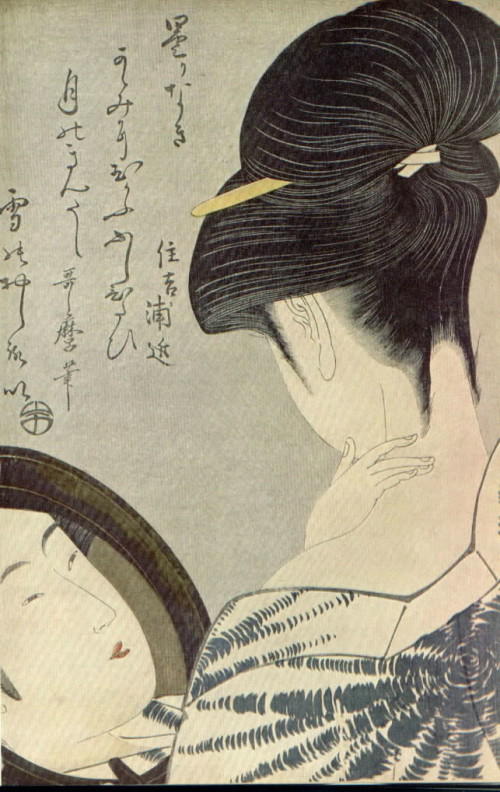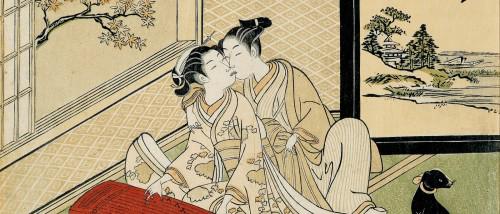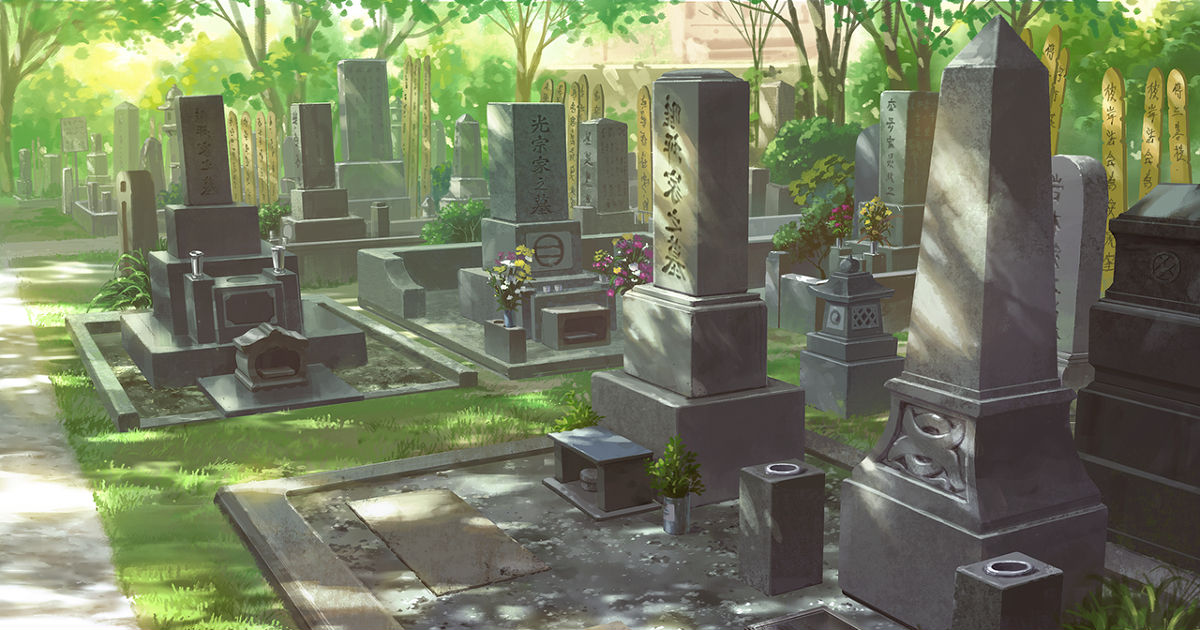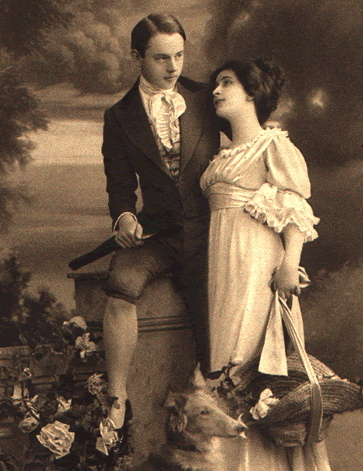
Lafcadio Hearn was an American journalist who, along with Basil Hall Chamberlain, collected and wrote down Japan’s folktales. While many Japanese, in the past, had also recorded various folktales, it wasn’t until Westerners took an interest in Japanese folklore the keepers of this cultural oral tradition began be given a long shift. Hearn and Chamberlain knew Yanagita Kunio, who would become the pioneer of formalized native Japanese folklore studies.
Hearn eventually traveled to Japan and became a Japanese citizen. He continued to record and collect stories like this one:
Related in the Otogi-Hyaku-Monogatari
Says the old Japanese author, Hakubai-En Rosui:
“In Chinese and in Japanese books there are related many stories,–both of ancient and of modern times,–about pictures that were so beautiful as to exercise a magical influence upon the beholder. And concerning
such beautiful pictures,–whether pictures of flowers or of birds or of people, painted by famous artists,–it is further told that the shapes of the creatures or the persons, therein depicted, would separate themselves from the paper or the silk upon which they had been painted, and would perform various acts;–so that they became, by their own will, really alive. We shall not now repeat any of the stories of this class which have been known to everybody from ancient times. But even in modern times the fame of the pictures painted by Hishigawa Kichibei–‘Hishigawa’s Portraits’–has become widespread in the land.”
He then proceeds to relate the following story about one of the so-called portraits:–
There was a young scholar of Kyôto whose name was Tokkei. He used to live in the street called Muromachi. One evening, while on his way home after a visit, his attention was attracted by an old single-leaf screen, exposed for sale before the shop of a dealer in second-hand goods. It was only a paper-covered screen; but there was painted upon it the full-length figure of a girl which caught the young man’s fancy. The price asked was very small: Tokkei bought the screen, and took it home with him.
When he looked again at the screen, in the solitude of his own room, the picture seemed to him much more beautiful than before. Apparently it was a real likeness,–the portrait of a girl fifteen or sixteen years old; and every little detail in the painting of the hair, eyes, eyelashes, mouth, had been executed with a delicacy and a truth beyond praise. The manajiri seemed “like a lotos-blossom courting favor”; the lips were “like the smile of a red flower”; the whole young face was inexpressibly sweet. If the real girl so portrayed had been equally lovely, no man could have looked upon her without losing his heart. And Tokkei believed that she must have been thus lovely;–for the figure seemed alive,–ready to reply to anybody who might speak to it.
Gradually, as he continued to gaze at the picture, he felt himself bewitched by the charm of it. “Can there really have been in this world,” he murmured to himself, “so delicious a creature? How gladly would I give my life–nay, a thousand years of life!–to hold her in my arms even for a moment!” (The Japanese author says “for a few seconds.”) In short, he became enamoured of the picture,–so much enamoured of it as to feel that he never could love any woman except the person whom it represented. Yet that person, if still alive, could no longer resemble the painting: perhaps she had been buried long before he was born!
Day by day, nevertheless, this hopeless passion grew upon him. He could not eat; he could not sleep: neither could he occupy his mind with those studies which had formerly delighted him. He would sit for hours before the picture, talking to it,–neglecting or forgetting everything else. And at last he fell sick–so sick that he believed himself going to die.
Now among the friends of Tokkei there was one venerable scholar who knew many strange things about old pictures and about young hearts. This aged scholar, hearing of Tokkei’s illness, came to visit him, and saw the screen, and understood what had happened. Then Tokkei, being questioned, confessed everything to his friend, and declared:–“If I cannot find such a woman, I shall die.”
The old man said:–
“That picture was painted by Hishigawa Kichibei,–painted from life. The person whom it represented is not now in the world. But it is said that Hishigawa Kichibei painted her mind as well as her form, and that her spirit lives in the picture. So I think that you can win her.”
Tokkei half rose from his bed, and stared eagerly at the speaker.
“You must give her a name,” the old man continued;–“and you must sit before her picture every day, and keep your thoughts constantly fixed upon her, and call her gently by the name which you have given her, until she answers you….”
“Answers me!” exclaimed the lover, in breathless amazement.
“Oh, yes,” the adviser responded, “she will certainly answer you. But you must be ready, when she answers you, to present her with what I am going to tell you….”
“I will give her my life!” cried Tokkei.
“No,” said the old man;–“you will present her with a cup of wine that has been bought at one hundred different wine-shops. Then she will come out of the screen to accept the wine. After that, probably she herself will tell you what to do.”
With these words the old man went away. His advice aroused Tokkei from despair. At once he seated himself before the picture, and called it by the name of a girl–(what name the Japanese narrator has forgotten to tell us)–over and over again, very tenderly. That day it made no answer, nor the next day, nor the next. But Tokkei did not lose faith or patience; and after many days it suddenly one evening answered to its name,–
“Hai!” (Yes.)
Then quickly, quickly, some of the wine from a hundred different wine-shops was poured out, and reverentially presented in a little cup. And the girl stepped from the screen, and walked upon the matting of the room, and knelt to take the cup from Tokkei’s hand,–asking, with a delicious smile:–
“How could you love me so much?”
Says the Japanese narrator: “She was much more beautiful than the picture,–beautiful to the tips of her finger-nails,–beautiful also in heart and temper,–lovelier than anybody else in the world.” What answer Tokkei made to her question is not recorded: it will have to be imagined.
“But will you not soon get tired of me?” she asked.
“Never while I live!” he protested.
“And after–?” she persisted;–for the Japanese bride is not satisfied with love for one life-time only.
“Let us pledge ourselves to each other,” he entreated, “for the time of seven existences.”
“If you are ever unkind to me,” she said, “I will go back to the screen.”
They pledged each other. I suppose that Tokkei was a good boy,–for his bride never returned to the screen. The space that she had occupied upon it remained a blank.
Exclaims the Japanese author,– “How very seldom do such things happen in this world!”

This story parallels modern dating culture. Dating apps have become one of the most accepted, if not the primary way, many people establish relationships. While this folktale centers around a painted fabric or paper screen, you don’t have to stretch far to see this screen as a modern digital screen. People who use dating apps swipe until they are bewitched by a “painting” that jumps from the screen. They aren’t far different from Tokkei. In the story, Tokkei allows his eros to almost drive him into death.
If you aren’t familiar with the term eros: in the Western ancient world love was divided into distinct concepts. The most well known are eros and agape. Eros is a sexual passion and a love for beauty; agape is unconditional love what seeks the good of others. Lesser-known definitions of love include philia, friendship between equals; storge, love between parents and children; philautia, love for oneself; and xenia, hospitality. People can and should hold people within multiple categories. Spouses ought to hold each other with eros, agape, philia, and xenia for example. Applying these terms to Japanese folklore isn’t good practice because Japanese culture has its own framework for love, but this framework largely maps onto the ancient Greek observations.
Love sickness is a common motif in Japanese folklore where people afflicted, like Tokkei, will die of despair and loneliness if they cannot be united with the object of their love. Love sickness appears especially often in Japanese folklore, afflicting both men and women in equal measure. Men also want lifelong, loving relationships, but somewhere along the way romantic stories aimed at men, such as The Screen Maiden, stopped being a part of literature. People today continue to fall prey to love sickness. Unlike in folklore where a particular man or woman sparks this sickness, we live in an unspecific miasma of media love messaging which induces this illness. We made it clinical with terms like depression, but the ancient phrase is more apt: love sickness. While Tokkei found the sweat-and-sanguis woman more beautiful than her image, today’s media culture doesn’t allow even eros to function as it once had. The lovely people on our screens represent an inhuman and inhumane beauty standard. Tokkei’s story takes place in a time long before such images could corrupt expectations. As those expectations became corrupted, eros lost its ability to draw people together for long enough to give agape or philia a chance to develop between them. Yet, despite these differences, Hearn records the original story’s teller as saying “‘How very seldom do such things happen in this world!'” Meeting a lifelong love through a screen remains statistically “very seldom.”
These words ought to provide us moderns with a bit of caution about seeking our own ideal screen spouses!
References
Hearn, Lafcadio (1900) Shadowings. Boston: Little, Brown, and Company.



